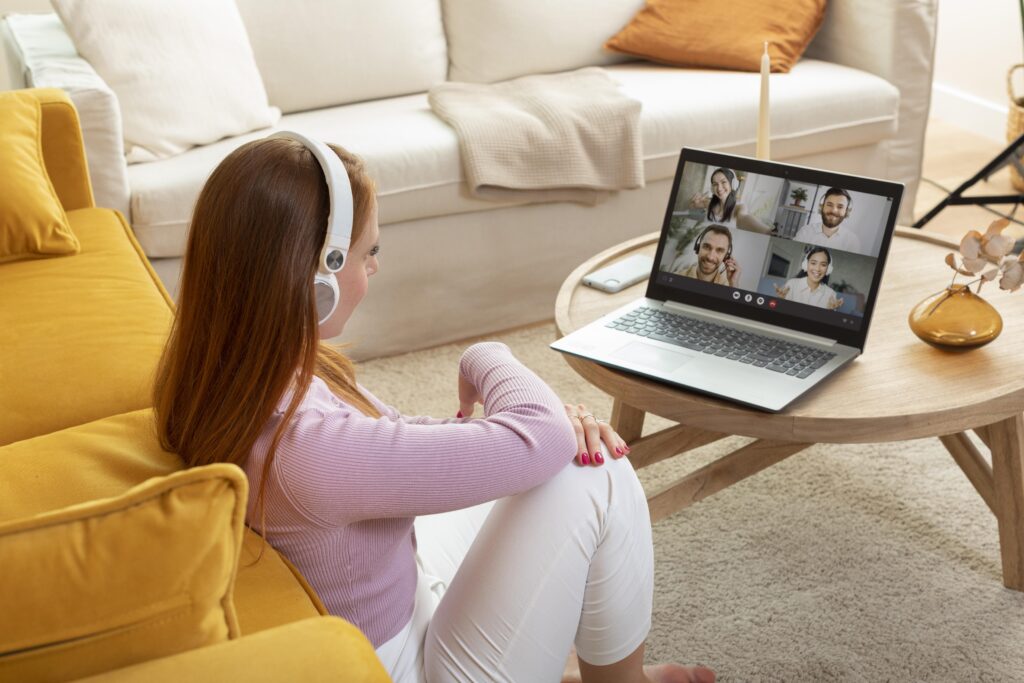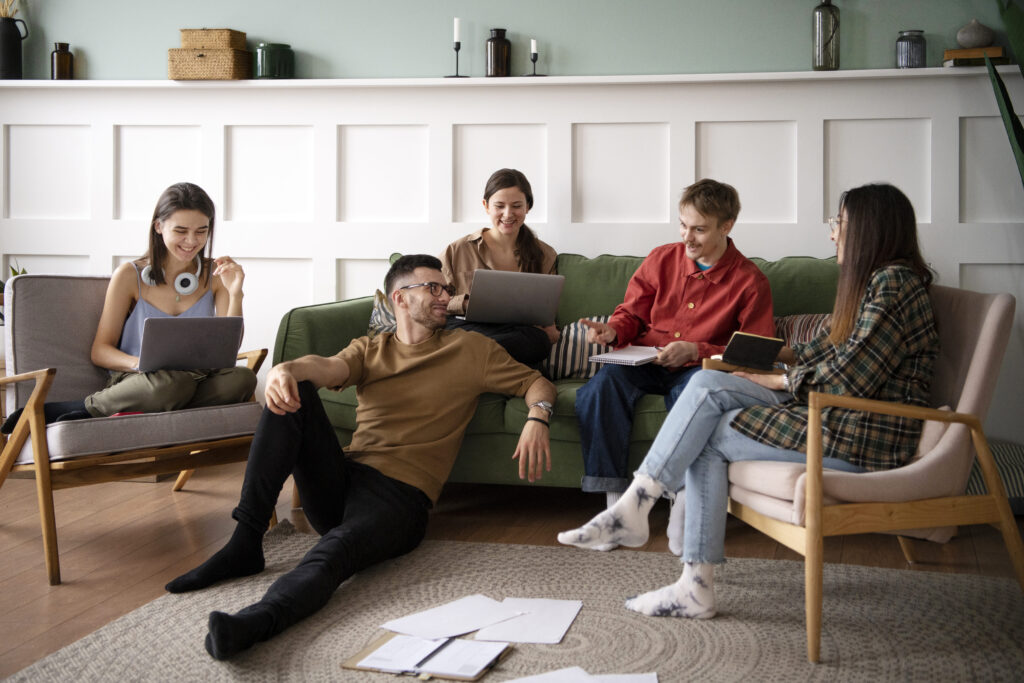The Power of: Combining Sober Living and Virtual IOP for Recovery Success
In today’s rapidly evolving landscape of behavioral health care, many people are seeking alternatives to the traditional rehab model. Whether due to financial limitations, job and family responsibilities, or a need for more flexibility, a growing number of individuals are turning to a hybrid approach: combining virtual treatment with sober living. This model isn’t just convenient—it’s effective, accessible, and increasingly supported by data.
For those recovering from substance use disorders, managing mental health conditions, or both, the blend of Virtual Intensive Outpatient Programs (IOPs) and sober living offers a powerful path toward sustainable recovery. Especially in California, where access to care can be inconsistent and housing costs are high, this combined model is quickly becoming one of the most practical and effective approaches.
What Is Sober Living?
Sober living homes are structured, drug- and alcohol-free environments designed to help individuals transition from inpatient treatment or early sobriety into more independent living. Residents typically follow house rules, participate in chores and group activities, and maintain accountability through peer support.
But sober living isn’t only for those recovering from substance use. Many residents are also managing mental health conditions such as depression, anxiety, or PTSD. For these individuals, the structure and community of sober living can provide the stability they need while continuing therapeutic work externally.
Research underscores the long-term benefits of this supportive housing model. In one longitudinal study, residents in sober living homes showed significant improvements in psychiatric symptoms, substance use, employment, and arrest rates over 18 months. Homelessness among participants dropped from 16% to 4%, while stable housing increased from 13% to 27%.

What Is a Virtual IOP?
Intensive Outpatient Programs (IOPs) provide structured therapy without requiring full-time residential treatment.
Traditionally, they include 9 or more hours per week of group and individual therapy. Virtual IOPs simply deliver this care remotely through secure telehealth platforms.
Most virtual IOPs incorporate evidence-based practices like Cognitive Behavioral Therapy (CBT), trauma-informed care, and relapse prevention planning. Programs are designed to treat a wide range of conditions, including:
- Substance use disorders
- Depression
- Anxiety
- PTSD and trauma-related disorders
- Bipolar disorder and other mood disorders
And the results are impressive:
- 80% of participants in virtual IOPs complete at least 30 days of care with sustained abstinence
- Online CBT programs have an adherence rate of 82%
- 71% of virtual CBT users show measurable improvement; 52% achieve full recovery within 12 weeks
These outcomes demonstrate that virtual IOPs are more than a pandemic-era workaround. They’re a core part of the future of treatment.
Can You Do Online IOP and Sober Living at the Same Time?
Yes—and more people are doing it than ever before.
In California, where commutes are long and treatment centers may be miles away, the ability to receive therapy from home (or sober living) is a game-changer. Many sober living homes now encourage or require residents to be in some form of outpatient care. Virtual IOPs allow them to meet this requirement without sacrificing time, energy, or consistency.
Even better, virtual treatment often improves engagement. One major health system reported an 89.5% attendance rate in virtual IOPs compared to 84.5% in-person. The convenience and accessibility mean residents are more likely to stick with care—especially when it’s a good fit for their schedule and comfort level.
Residents in sober living might attend virtual IOP sessions from their bedroom, the community room, or a quiet workspace provided by the house. Group sessions typically happen 3–4 evenings a week, with optional individual therapy and psychiatric check-ins woven into the weekly schedule.

The Benefits of Combining Sober Living with Virtual Care
This hybrid model offers a layered, supportive structure that works for a wide range of people—from those exiting inpatient rehab to individuals navigating early sobriety while balancing work, school, or caregiving.
Some of the most compelling benefits include:
1. Dual Accountability
Sober living offers peer support, curfews, and in-person structure. Virtual IOP offers therapy, coping skills, and professional guidance. Together, they help residents stay grounded in both community and clinical care.
2. Flexibility for Working Professionals
Virtual care allows residents to attend therapy in the evenings, on lunch breaks, or on weekends—making it ideal for people with jobs, families, or other commitments.
3. Accessibility
Transportation, childcare, and scheduling challenges often prevent people from attending in-person therapy. Virtual care removes those barriers.
4. Proven Outcomes
Numerous studies show that combining sober living with outpatient care significantly reduces relapse and improves long-term outcomes.
5. Affordability
Virtual IOPs cost 32–50% less than in-person care. Some visits average $40–$50 versus $100–$176 for traditional sessions.
6. Access to Licensed Professionals
Many programs offer access to licensed therapists, psychiatrists, and case managers—ensuring residents receive holistic support.
Managing Mental Health in Sober Living
Many people enter sober living after detox or inpatient treatment, but the emotional work has just begun. Lingering depression, unresolved trauma, and anxiety are common. Without continued support, these challenges can quickly lead to relapse or disengagement.
Virtual IOPs allow residents to continue treatment where they live. They can attend therapy three nights a week, practice CBT strategies, and check in with a psychiatrist—all without disrupting their housing, work, or personal life.
This is especially important in California, where mental health needs are high. As of early 2021:
- 46.1% of adults in California reported symptoms of anxiety or depression
- Only 21.9% were able to access the therapy or counseling they needed
- Among 18–24-year-olds, 77% reported recent anxiety; over half reported depression
By integrating therapy into a stable living environment, residents can address emotional triggers in real time and build long-term resilience.
A Day in the Life: Virtual IOP and Sober Living in Action
Here’s what a typical weekday might look like for a California resident in sober living who’s participating in a virtual IOP:
Morning:
Wake up, house chores, breakfast, job search or work shift
Afternoon:
Resume writing, 1:1 therapy session, lunch, community meeting
Evening:
6–9 PM: Virtual IOP group therapy (CBT, relapse prevention, trauma support)
Night:
Personal time, journaling, house curfew check-in, rest
This routine gives residents the freedom to rebuild their life while staying connected to clinical support and peer accountability.
Why California Residents Are Embracing This Model
The virtual IOP + sober living combo is especially effective in California due to:
- Severe provider shortages: 23 out of 58 counties have fewer than one psychiatrist per 10,000 people. Six counties have none.
- Long wait times: LA-based Medicaid patients wait an average of 64 days for a psychiatric appointment.
- Housing instability: California has the highest rate of homelessness in the U.S. — and 37% of unhoused individuals report regular drug use.
Sober living helps fill the housing gap while virtual IOP fills the clinical care gap. It’s a flexible, scalable, and affordable solution in a state where many people fall through the cracks of the traditional system.
Beachfront Sober Living: A Home That Supports Your Growth
At Beachfront Sober Living, we understand that recovery doesn’t end after detox. That’s why we welcome and support residents who are actively participating in virtual IOPs, teletherapy, or outpatient psychiatry.
We offer:
- Quiet, tech-friendly environments for virtual sessions
- Stable, sober housing with daily accountability
- Community support that respects your treatment plan
- Couples sober living options for those healing alongside a partner
- Pet-friendly sober living for residents who want to recover with their animal companion
Whether you’re dealing with addiction, mental health, or both—you don’t have to choose between stability and care. We help you access both.
If you’re looking for a Virtual IOP in California, we encourage you to contact our trusted partner, Asana Recovery, to explore your treatment options. Together, we offer a seamless bridge between professional care and supportive housing.
Learn more about how much sober living costs and how to prepare for sober living here.

